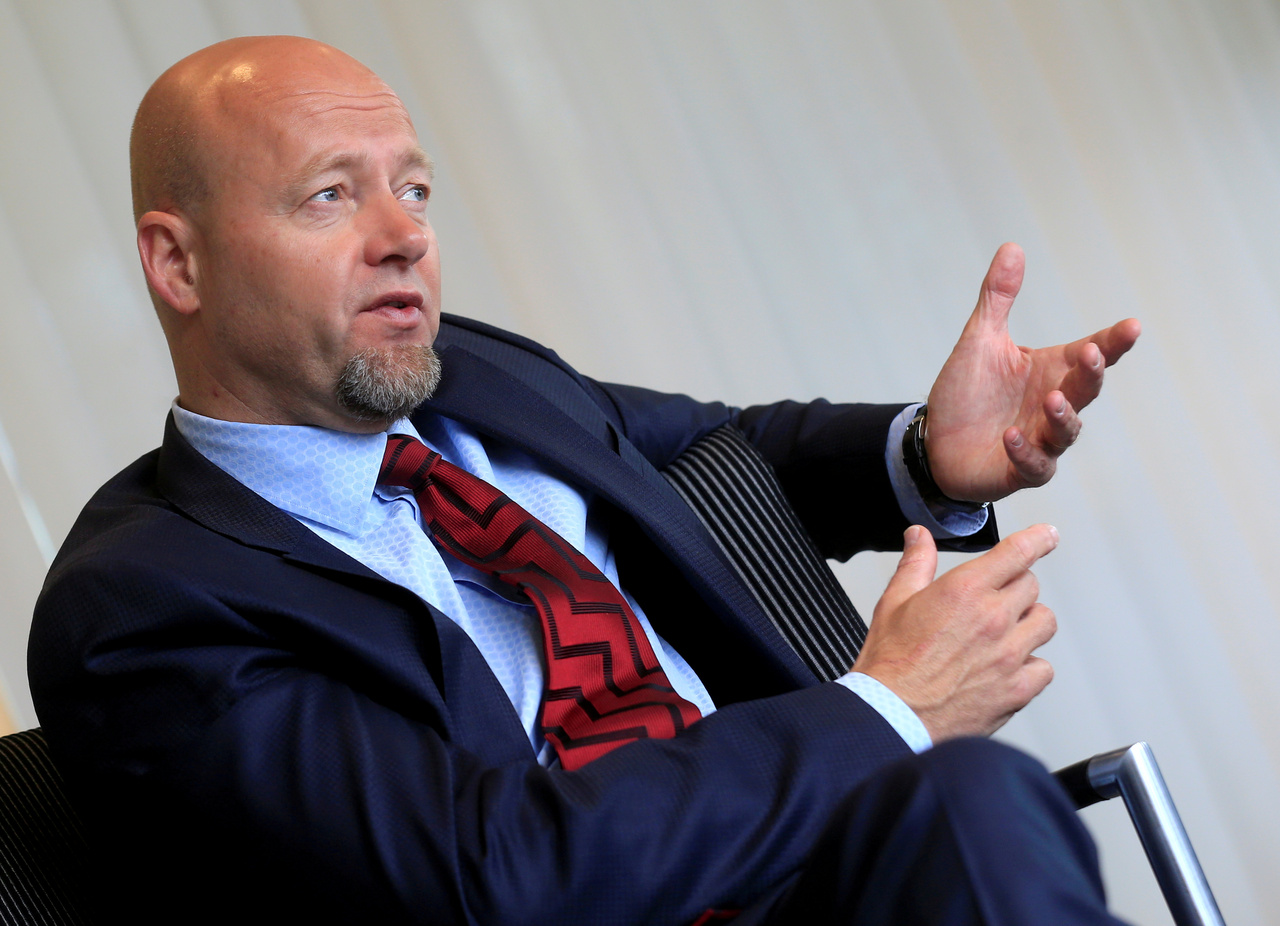World's biggest sovereign wealth fund dragged closer to forced asset sales
Sign up now: Get ST's newsletters delivered to your inbox

Yngve Slyngstad, chief executive of Norway's sovereign wealth fund, has already said cash flow this year will be "significantly lower" than previously expected.
PHOTO: REUTERS
Follow topic:
OSLO (BLOOMBERG) --Norway's US$950 billion (S$1.35 trillion) sovereign wealth fund - the world's biggest - is about to make history as it prepares to liquidate assets to cover government withdrawals.
The crisis triggered by the coronavirus pandemic is playing out very differently for the giant investor than the 2008 great recession. Back then, Norway's wealth fund used the global sell-off to buy up cheap stocks. This time, the fund will probably need to offload a sizable chunk of its bond portfolio.
Norway faces its worst economic shock in half a century. With petroleum revenue sharply down, the government has much less income to use on crisis measures. That means it will need to withdraw historic sums from its wealth fund to make ends meet.
While past withdrawals were easily covered by the fund's cash flow, that's no longer the case. Companies it invests in are now suspending dividends en masse, in response to the crisis.
Chief executive officer Yngve Slyngstad has already said cash flow this year will be "significantly lower" than previously expected. In 2019, the fund got 243 billion kroner (S$30.9 billion). Meanwhile, calculations by Bloomberg News show that Norway's government will need to pull at least 266 billion kroner from the fund this year (assuming oil prices stay at current levels through 2020).
The situation is quickly deteriorating, and the numbers remain subject to change. A week ago, it looked like government withdrawals would reach just 150 billion kroner.
Meanwhile, a rule requiring the fund to rebalance its portfolio is likely to be triggered on Tuesday (March 31), after the equity portion fell about 5 percentage points below a 70 per cent target last week. In that case, withdrawals would need to be covered by bond sales, Slyngstad said.
The contrast to 2008-2009 is striking. In the first quarter of 2009, the fund bought 136 billion kroner's worth of cheap stocks, laying part of the foundation for its spectacular ascent during the decade-long rally that followed. What's more, Norway's petroleum income peaked in 2008, and the government deposited surplus cash into the fund.
Slyngstad, who is due to step down this year after running Norway's wealth fund for 12 years, has described the period right after the 2008 financial crisis as the "hardest - but also in retrospect best" of his tenure.
Norway's fund was set up in the 1990s and invests in stocks, bonds and real estate abroad. The Nordic country has a self-imposed rule to limit spending of oil wealth to 3 per cent of the fund's value over annual budgets in the long run. This year, that's likely to be at least 3.9 per cent, the government said in fresh estimates on Monday.

